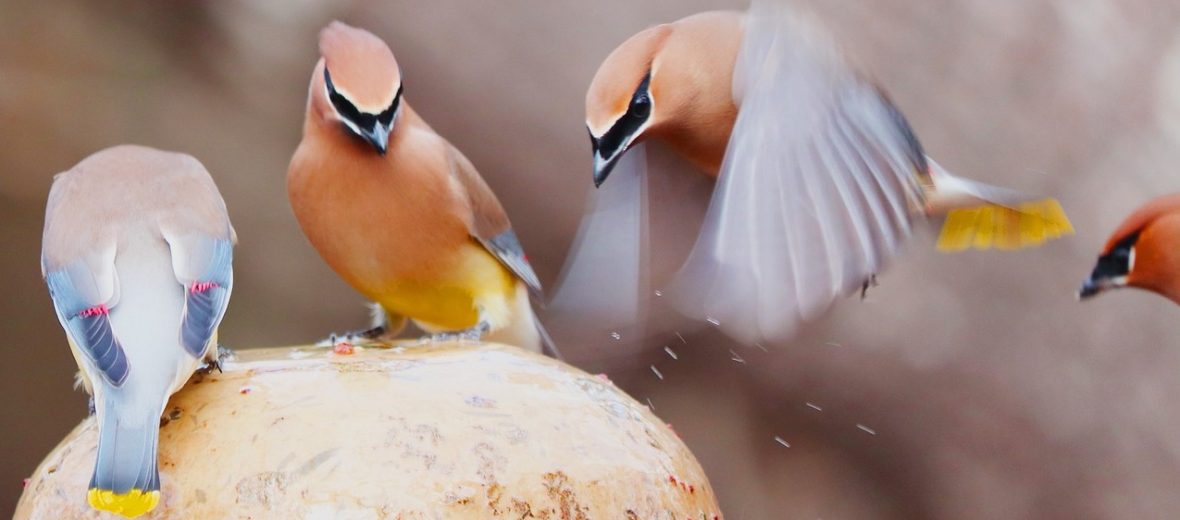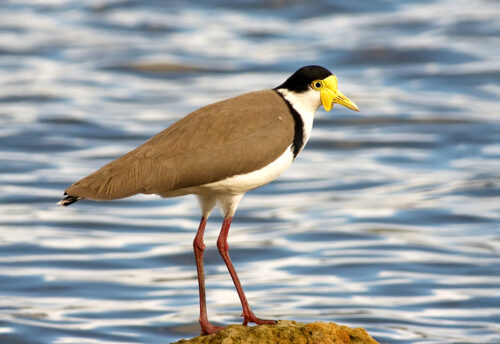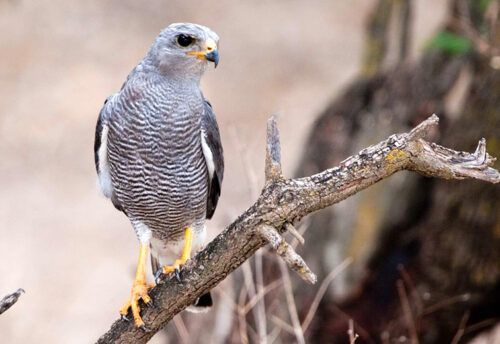
Enter the cedar waxwing, aka Canada robin, cedar bird, cherry bird, recellet, and southern waxwing. These birds can be found throughout Canada, United States, Mexico, Central America, and the northnwestern tip of South America. They prefer the edges of wooded areas and open forests near water. Waxwings are also found around cemeteries, golf courses, and other landscaped environments with trees that are spaced relatively far apart and with easy access to water. With an estimated population of 64,000,000 and increasing, these birds are listed as Least Concern by the IUCN.
First the Stats…
Scientific name: Bombycilla cedrorum
Weight: Up to 1.1 ounces
Length: Up to 6.1 inches
Wingspan: Up to 12 inches
Lifespan: Up to 8 years
Now on to the Facts!
1.) Cedar waxwings eat cedar cones, fruit, holly berries, and insects.
2.) A group of waxwings is called a ear-full or museum.
3.) Waxwings are very social and not territorial. They can be seen in large ear-fulls.
4.) If berry supplies get too low, these birds will undergo mass migrations to new areas with an abundant food source.
5.) Attracted to the sound of running water, they will congregate near creaks and streams in which to bathe and drink.
But wait, there’s more on the cedar waxwing!
6.) Social grooming is commonplace.
7.) Cedar waxwings are diurnal (active during the day).
Did you know…?
Waxwings can fly at speeds of up to 25 mph.
8.) These birds feast on cedar, dogwood, hawthorn, juniper, mulberries, raspberries, service berries, strawberries, winterberries, and will fly over bodies of water to snatch up the occasional insect.
9.) They communicate vocally with their primary calls sounding like “see” or “sree.”
10.) Waxwings are serially monogamous (stay with their partner only for 1 season. The next season, they will pair up with another.
But wait, there’s still more on the cedar waxwing!
11.) Females lay up to 6 eggs that hatch in up to 13 days.
12.) Chicks are independent at around 18 days.
Now a Short Cedar Waxwing Video!
Be sure to share & comment below! Also, check out the Critter Science YouTube channel. Videos added regularly!
Want to suggest a critter for me to write about? Let me know here.



